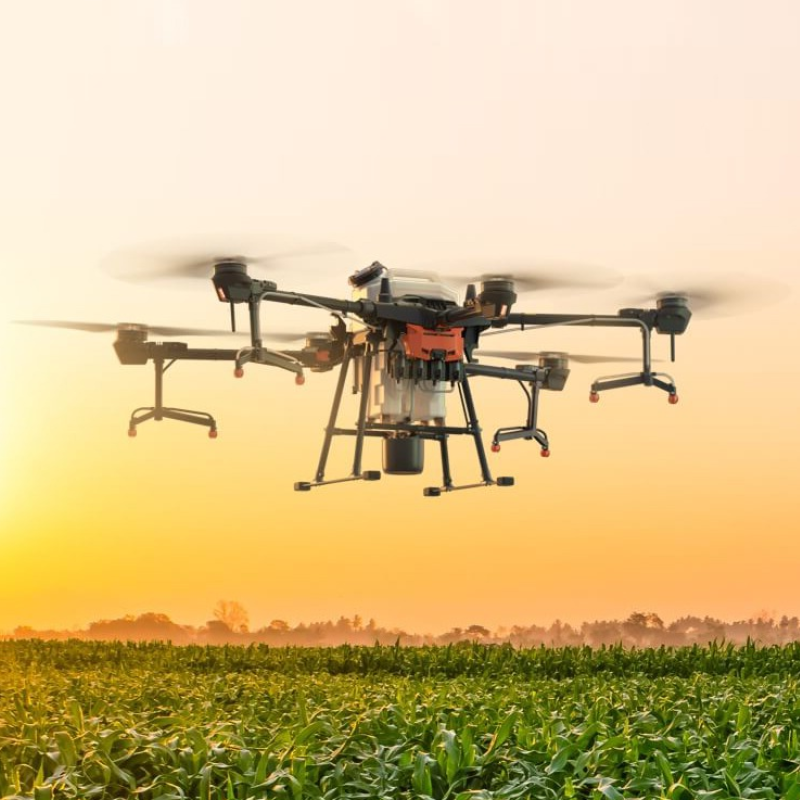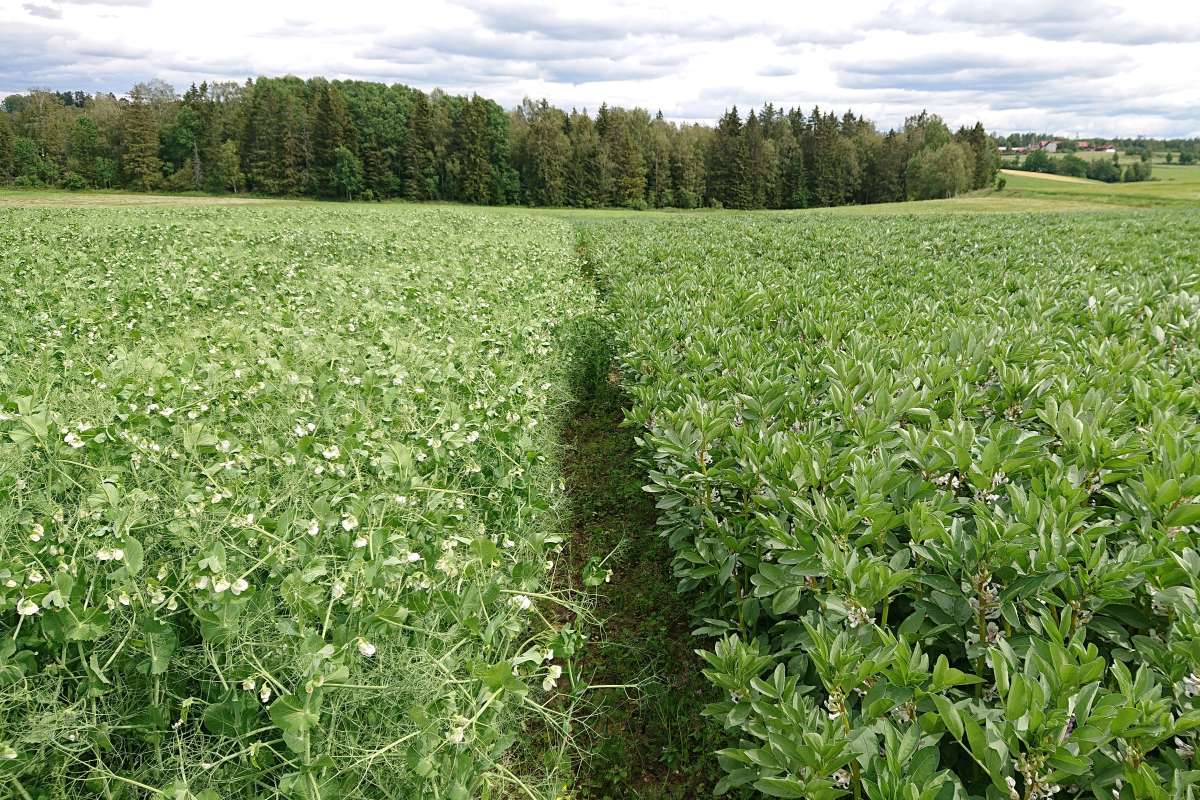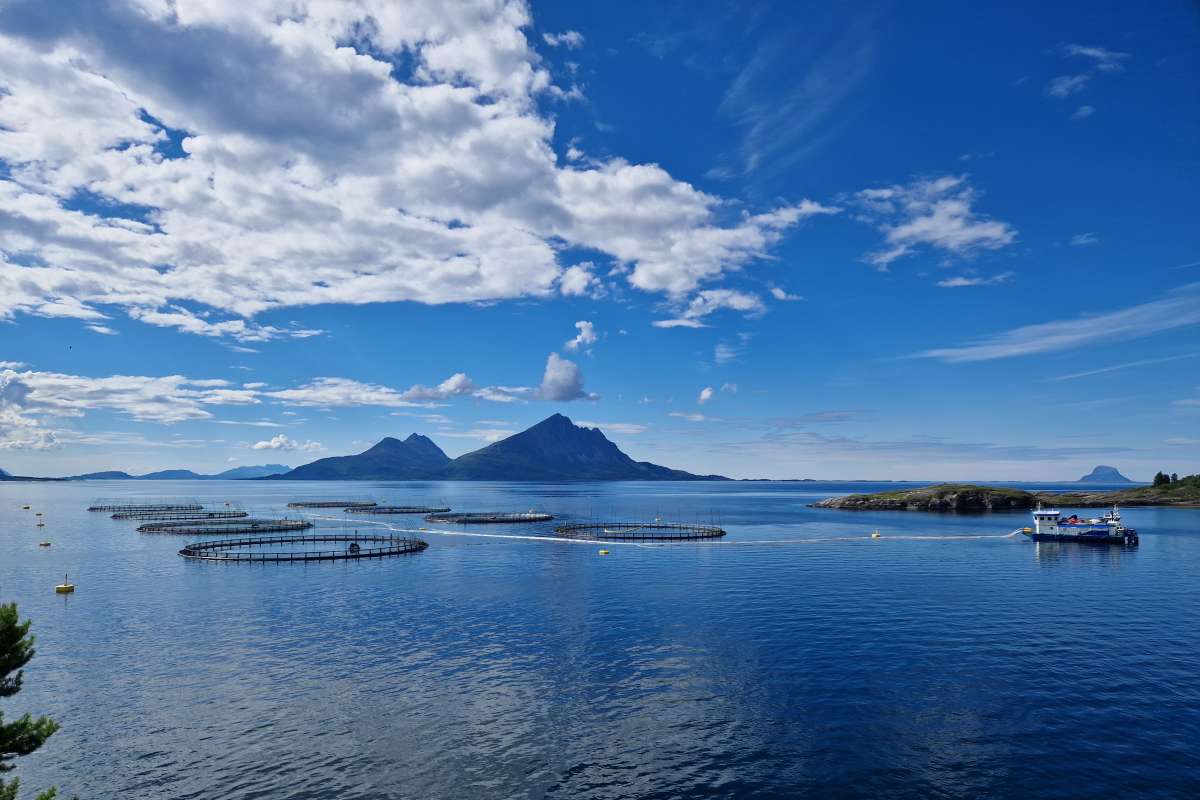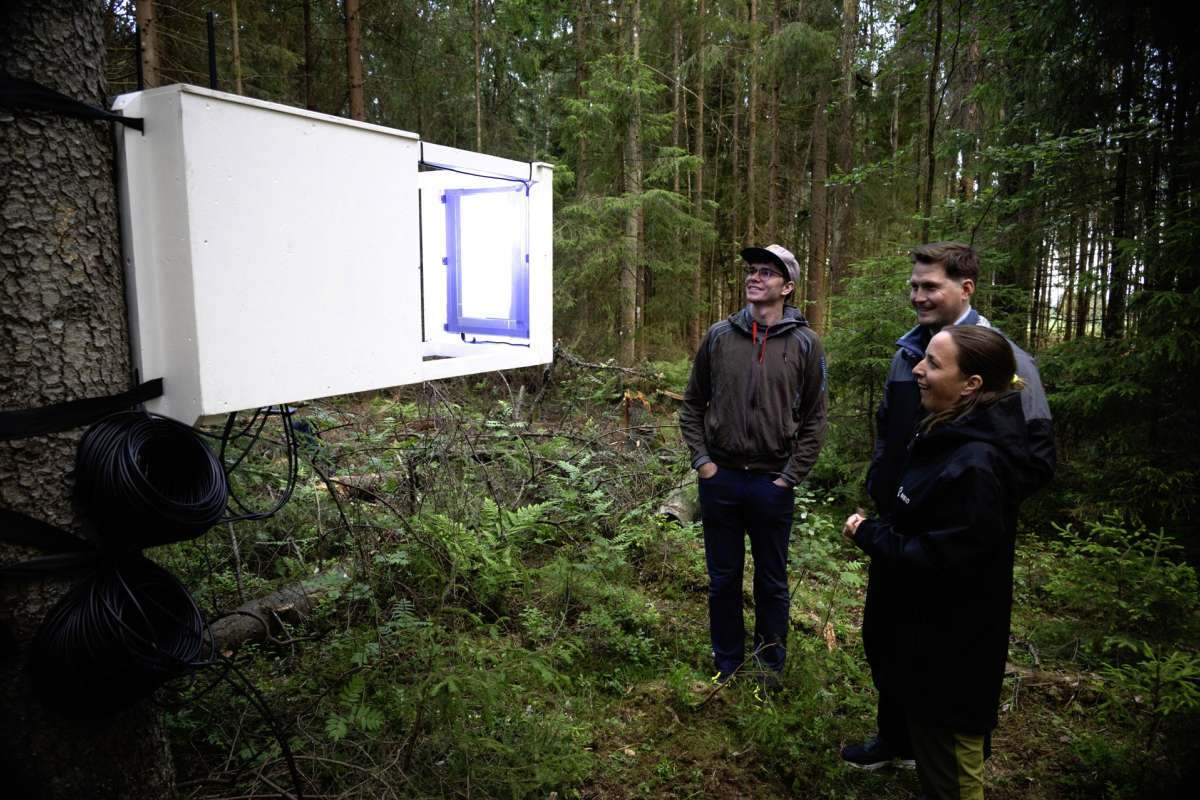Can drone-mounted tree planting replace manual tree planting?
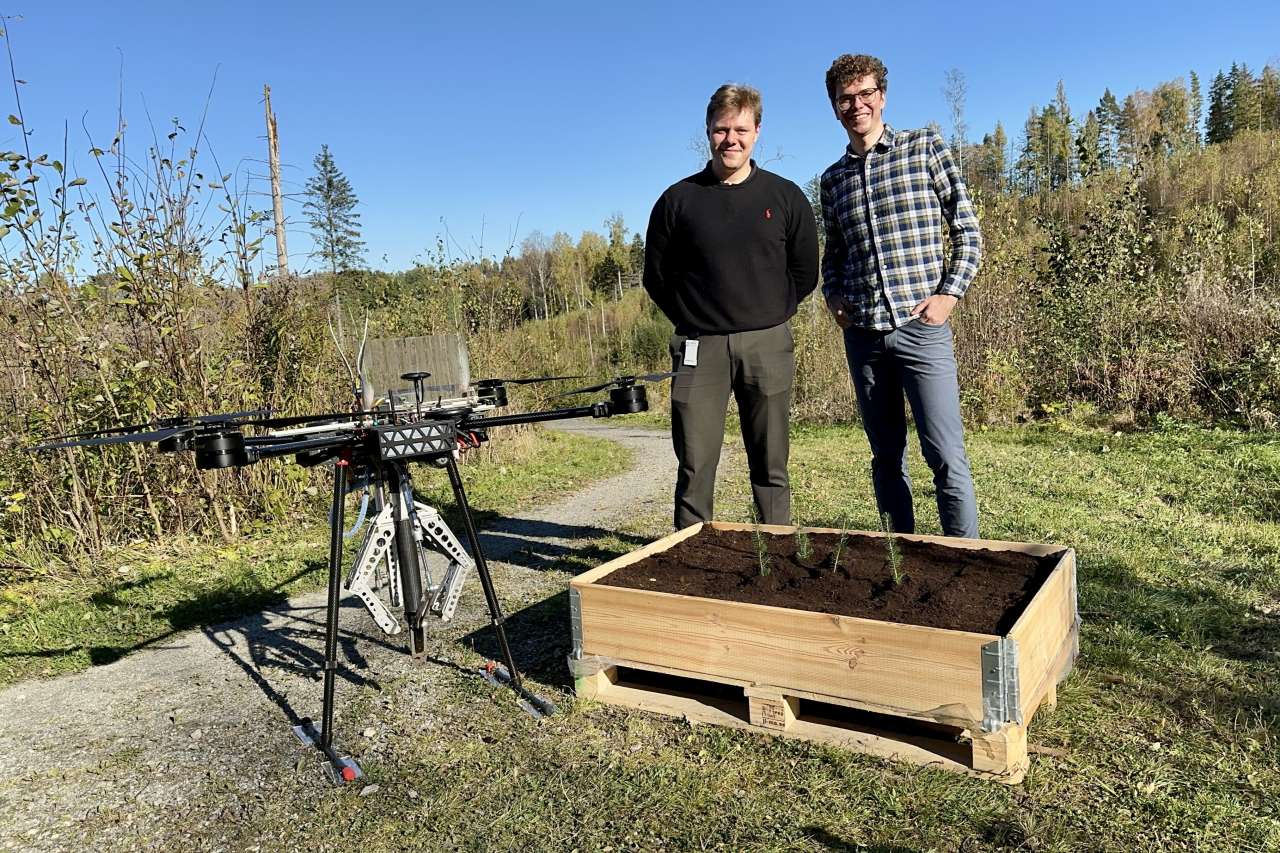
Researchers Thor Kamp Opstrup (University of Southern Denmark) and Steffan Lloyd (NIBIO) present the tree-planting drone SkyPlanter. Photo: Steffan Lloyd
Tree planting is a manual task that can be both expensive and labour-intensive. Now, Norwegian and Danish researchers are developing a drone that could make the job easier.
Over the past three years, tree planting has remained relatively stable in Norway. In 2024, more than 48 million tree seedlings were planted, covering over 2,600 square kilometres. According to Statistics Norway (SSB), this is the highest number in over thirty years.
Tree planting using current manual methods can be challenging due to labour shortages and varying terrain conditions. It is often difficult to gather enough workers for each planting season. Large excavator-mounted tree-planting machines do exist, but they are expensive, and work best on large, open and flat areas. These machines can get stuck or tip over, making them unsuitable for the steep and inaccessible forested areas that are common in Norway. They are also prohibitively expensive to move to planting sites, due to their large size.
“Much of Norwegian forests is owned by small-scale forest owners. For them, it’s just not economically feasible to bring in a large planting machine, even if their forest is flat enough to use them,” says NIBIO researcher Steffan Lloyd.
He explains that drones could be a solution to the challenges of manual planting. Drones don’t need to be large and can be easily transported to the planting site. They can fly over rough terrain and land where planting is needed, regardless of ground conditions. This enables planting in areas that are hard for humans to reach.
SkyPlanter
The tree-planting drone SkyPlanter is the result of a collaboration between NIBIO and the University of Southern Denmark (SDU).
“NIBIO built the seedling-planting mechanism, while our Danish partners developed the drone. The work is funded by Horizon Europe, as part of SPADE – a larger project developing drone technology for various applications, including tree planting.”
The project began in 2023, and the first prototype was tested in October of last year.
Lloyd says that some drone systems already exist that use so-called "seed bombing," where seeds are dropped from the drone and land on the surface. This works in some situations, but not all.
“Our solution focuses on precision planting of trees, which provides better control over where the trees are planted and a higher success rate. This is important to ensure the trees grow into large, healthy forests.”
For now, the drone must be operated by a ground-based pilot, but the researchers plan to use cameras and laser scanners to scan the terrain and find optimal planting spots. The use of artificial intelligence will also make the system more autonomous and efficient.
The planting process takes three steps
The system consists of a custom-built drone with four rotors, a planting tool that weighs about four kilos, a mechanism for reloading seedlings, and a compressed air system that enables strong movements without significantly increasing weight.
“The planting process occurs in three steps,” Lloyd explains:
- A pointed tool is driven into the ground with a short, powerful thrust to make a hole.
- A hatch opens, and the seedling is dropped into the hole.
- Finally, a claw-like mechanism pushes down to pack the soil around the plant.
The entire process, from when the drone lands to when it takes off again, takes less than ten seconds. The system weighs under 25 kilograms, and with current batteries, it can fly continuously for just over 20 minutes.
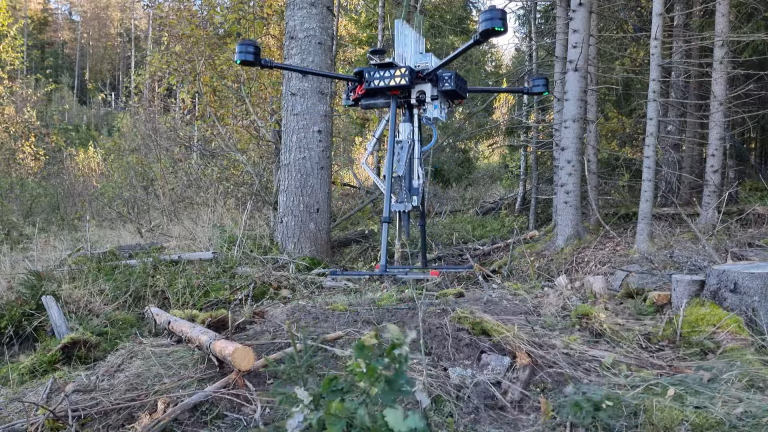
Economics and future challenges
Drones are much cheaper and easier to transport than large machinery, making them more cost-effective for forest planting.
“It’s unlikely that each forest owner will buy their own planting drone. We envision a rental system, making the service more accessible for small-scale forest owners. This could significantly reduce the cost of forest planting.”
The NIBIO researcher emphasizes that the project is still in an early development phase, with much work remaining to make the system commercially viable. This includes improvements to both hardware and software.
“We are already working on version 2,” Lloyd says. “We want to solve some of the issues we experienced with the first prototype. For example, we aim to ensure the drone can handle obstacles and plant in different terrain conditions.”
“So far, we've found that the system struggles if the soil is too hard. There’s a limit to how much force the drone can exert to press the plants into the ground.”
“We also need to look at how to expand the drone’s planting capacity. The prototype can only carry seven seedlings. A commercial version should handle closer to 25. In the future, we envision drones that can plant autonomously and work in coordinated ‘swarms.’ This way, large areas could be planted quickly by a single operator.”
For now, the SkyPlanter project will continue until fall 2026. The researchers are currently pursuing a patent and will consider further commercialization of the technology.
Contacts

Links
SPADE Project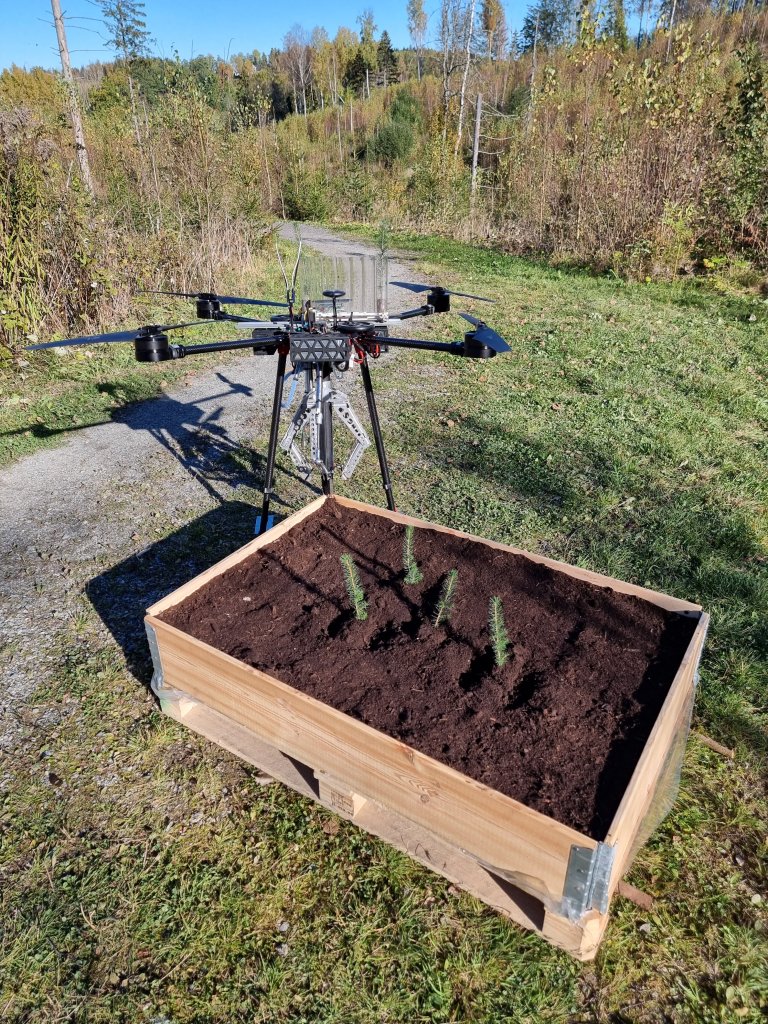
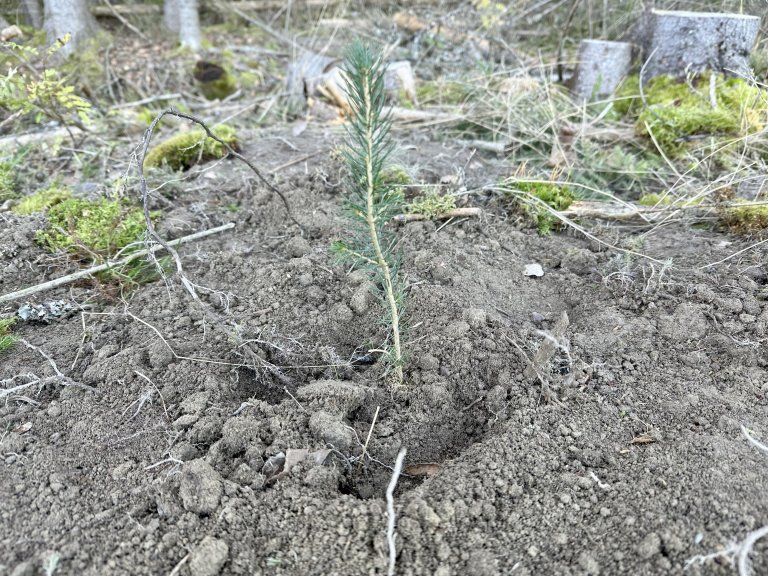
Contacts


